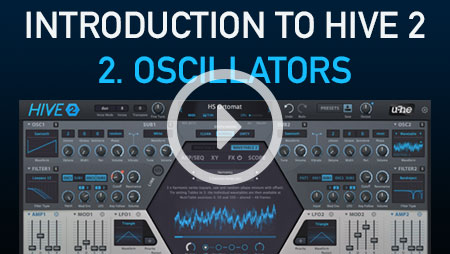


#U he hive review manual#
Toggling through these three modes conveniently offers a fresh outlook on any patch without altering manual settings at all. The dedicated amp and modulation envelopes are straightforward and simple, while the modulation matrix operates with a drop-down menu for modulation sources, and an intuitive drag-and-drop selection for destination parameters.įinally, there are three audio calculation modes that can instantly give your patch a subtly distinct character: normal, which combines exponential oscillator detune with an over-sampled self-oscillating ladder filter and non-linear resonance dirty, which delivers exponential envelope stages and an oversampled self-oscillating diode ring-style filter for an unpredictable approach and clean, based on a somewhat wider oscillator detuning, exponential decay and release, and linear, non-distorting, state variable filters-perfect for honey-smooth frequency response. Each LFO can be set to a tempo-synchronized base rate between 1/64th note and eight bars, with a corresponding frequency multiplication sweep that easily veers into cool self-oscillating effects at higher extremes.
#U he hive review serial#
Each filter can be assigned to any of the two oscillators and their sub-oscillators, while the second filter can be set to filter the output of the first, for easy serial filtration there's also a handy link button to mirror the control of both filters simultaneously.Įight LFO shapes come in the form of sine, triangle, saw up or down, square high or low, and random hold or glide. Coupled with three phase modes-including a flow setting that closely emulates analog oscillator triggering-along with vibrato and dedicated width controls, the oscillators are all set to punch above their weight, and a clean test of each oscillator type delivered an impressively fertile tonal range.Ĭreamy filters are available in band-pass, band-reject, high-pass, peaking, and both 12- or 24-pole low-pass flavors. Each oscillator can be multiplied up to 16 times for a lush range of extravagant unison effects, and can be paired with a rich sub oscillator that takes the same shape as the main oscillator by default, but which can also be set to one of the other eight waveforms.


Rather than re-write the book on modern synthesis, each of Hive's two core oscillators provide a range of familiar analog waveforms: sine, sawtooth, triangle, pulse, square, half, and narrow, along with white and pink noise. The bottom left contains pitch controls such as vibrato and glide, while the larger bottom right area shows the either keyboard or a modulation matrix with up to 24 routings. Along top is a basic control bar with handy undo and redo buttons, as well as the standard polyphony, transposition, and master volume settings. The hexagon provides access to a rather deep sequencer and arpeggiator, as well as a bank of seven effect modules including distortion, chorus, reverb, delay, EQ, compressor, and phaser. Hive's futuristic GUI is divided into eight sections: two oscillators, two filters, two LFOs, and four envelopes, all arranged symmetrically around the hexagonal central display.


 0 kommentar(er)
0 kommentar(er)
